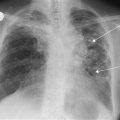Foot Deformities
These are not common. The deformity will often be apparent at birth but occasionally does not present until the child starts walking. A deformity of the foot and ankle is normally referred to as ‘talipes’. Other terms may qualify the word talipes, e.g. varus (inverted heel), valgus (everted heel) and equinus (foot plantar-flexed). Deformities of the toes are dealt with under toe lesions (p. 458).
History
Talipes equinovarus
Apparent at birth. The child is born with clubfoot. Picked up on routine postnatal examination.
Metatarsus adductus
Common cause of intoeing in children. Only the forefoot is adducted and not the hindfoot.
Pes planus
All children are flatfooted and the arches are not fully developed until the age of ten. The parents may notice an abnormality of gait and perhaps rapid and uneven wear and tear of the shoes. Pain is rare.
Pes cavus
There is accentuation of the longitudinal arch of the foot. There may be pain and discomfort. Again, the condition may be noted by the child’s parent. There may be no specific cause. Alternatively, there may be a history of spina bifida, spina bifida occulta, poliomyelitis or rarely Friedreich’s ataxia, for which there will be a family history. Charcot–Marie–Tooth disease begins at puberty with foot drop and weakness in the legs.
Acquired talipes
There are a variety of causes of upper and lower motor neurone lesions giving rise to acquired talipes. Check for a history of spastic paresis, cerebrovascular accident, spina bifida, poliomyelitis. There may be a family history of Friedreich’s ataxia. The patient may be known to have muscular dystrophy. With Volkmann’s ischaemic contracture, there will be a history of ischaemia of the calf muscles, e.g. from supracondylar fracture of the femur with popliteal artery damage.
Trauma
There will usually be an obvious history of trauma or of burns causing contractures.
Examination
Talipes equinovarus
This will usually be apparent in the newborn. There is an equinus deformity, i.e. the hindfoot is drawn up with a tight Achilles tendon; varus deformity – the sole faces inwards; and adduction of the forefoot – the inner border of the forefoot is concave and points upwards.
Metatarsus adductus
The hindfoot is normal with a normal sized heel. The forefoot is adducted.
Pes planus
The longitudinal arch is flattened and the medial border of the foot rests on the ground.
Pes cavus
The high arch is clearly visible. The toes are clawed due to hyperextension of the MTP joints and flexion of the IP joints. The patient cannot straighten the toes. Callosities usually develop under the metatarsal heads. Check for spina bifida, spina bifida occulta (hairy patch over lumbar spine), poliomyelitis. With Charcot–Marie–Tooth disease, there will be foot drop and also atrophy of the peroneal muscles. With Friedreich’s ataxia, there will be other signs, e.g. ataxia, dysarthria and nystagmus.
Acquired talipes
Check for upper motor neurone and lower motor neurone lesions. Friedreich’s ataxia (see above). Volkmann’s ischaemic contracture will demonstrate firmness and wasting of the calf muscles together with clawing of the foot.
Trauma
The deformity will depend on the type and severity of the trauma. Scarring and contractures of burns will be obvious.




